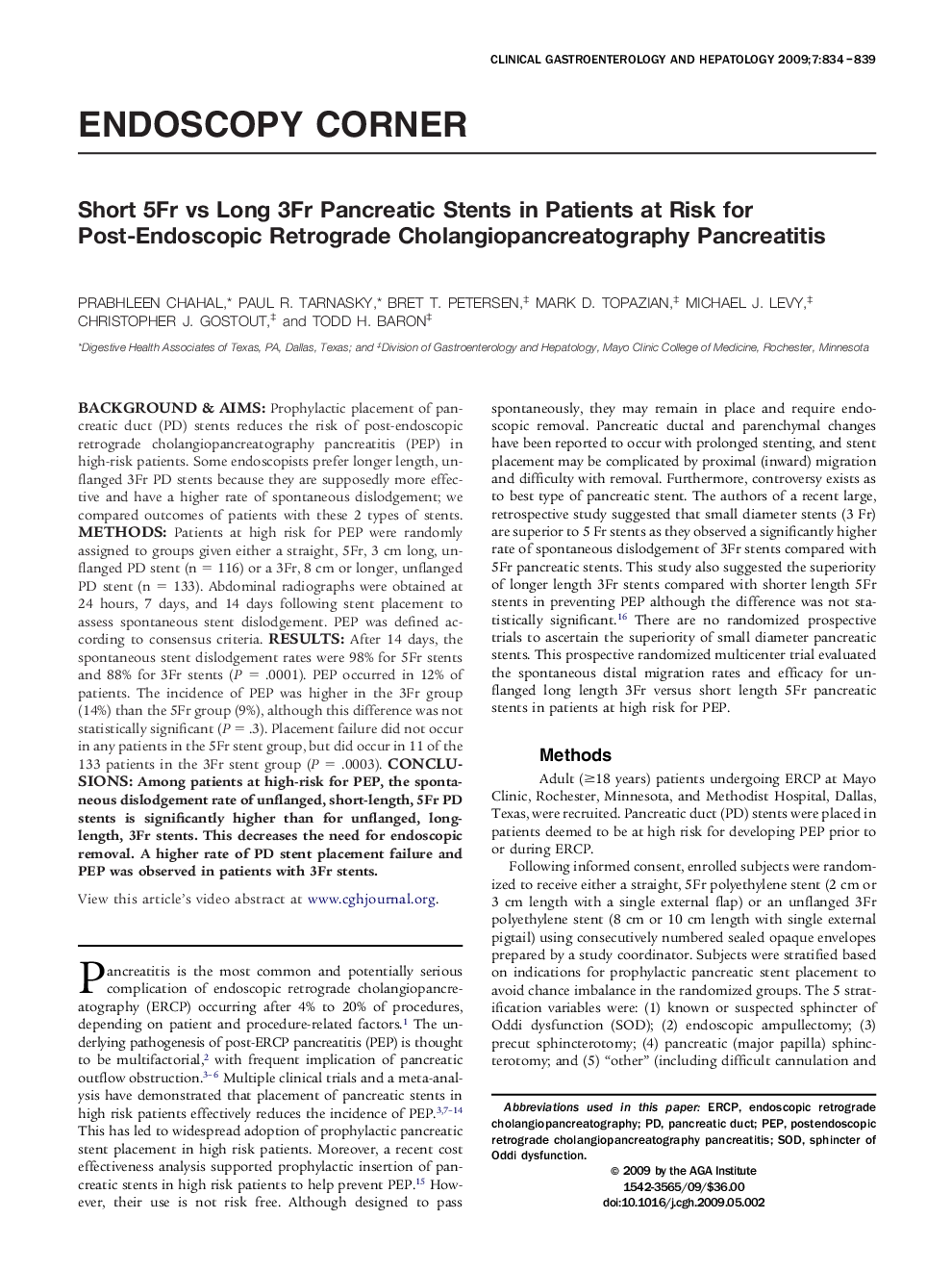| Article ID | Journal | Published Year | Pages | File Type |
|---|---|---|---|---|
| 3284415 | Clinical Gastroenterology and Hepatology | 2009 | 6 Pages |
Background & AimsProphylactic placement of pancreatic duct (PD) stents reduces the risk of post-endoscopic retrograde cholangiopancreatography pancreatitis (PEP) in high-risk patients. Some endoscopists prefer longer length, unflanged 3Fr PD stents because they are supposedly more effective and have a higher rate of spontaneous dislodgement; we compared outcomes of patients with these 2 types of stents.MethodsPatients at high risk for PEP were randomly assigned to groups given either a straight, 5Fr, 3 cm long, unflanged PD stent (n = 116) or a 3Fr, 8 cm or longer, unflanged PD stent (n = 133). Abdominal radiographs were obtained at 24 hours, 7 days, and 14 days following stent placement to assess spontaneous stent dislodgement. PEP was defined according to consensus criteria.ResultsAfter 14 days, the spontaneous stent dislodgement rates were 98% for 5Fr stents and 88% for 3Fr stents (P = .0001). PEP occurred in 12% of patients. The incidence of PEP was higher in the 3Fr group (14%) than the 5Fr group (9%), although this difference was not statistically significant (P = .3). Placement failure did not occur in any patients in the 5Fr stent group, but did occur in 11 of the 133 patients in the 3Fr stent group (P = .0003).ConclusionsAmong patients at high-risk for PEP, the spontaneous dislodgement rate of unflanged, short-length, 5Fr PD stents is significantly higher than for unflanged, long-length, 3Fr stents. This decreases the need for endoscopic removal. A higher rate of PD stent placement failure and PEP was observed in patients with 3Fr stents.To view this article's video abstract, go to the AGA's YouTube Channel.
